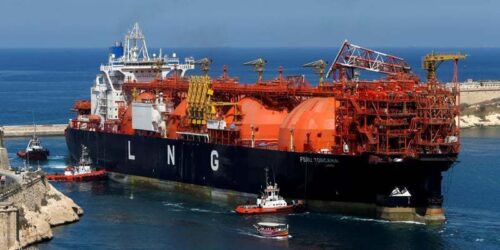Qatar could become the swing LNG (liquefied natural gas) producer and its LNG expansion plans are slated to boost real economic growth and fiscal surpluses to high-single digits and mid-single digits on average over 2021-27, according to Bank of America report.
“Qatar’s LNG strategy appears to be focused on defending and, in due course, growing its market share. Qatar’s structural cost advantage makes it well positioned to retain its pre-eminent supplier position, while allowing for greater flexibility in contract pricing,” the report said.
Qatar’s structurally low production costs provide key advantage, it said, adding the country’s pricing strategy is starting to exhibit more flexibility.
The report said the country’s planned boost in LNG capacity would augur well for the overall gross domestic product, or GDP. It should enhance activity through boosting hydrocarbon real GDP growth over 2025-27 and non-oil real GDP growth through higher investments over 2022-27.
“We estimate the LNG investment pipeline could boost non-hydrocarbon real GDP growth by 1.5ppt per annum, bringing it to average 5% over the period 2022-27, based on typical GCC fiscal multiplier estimates,” it said.
Higher activity would allow the economy to double in size, with nominal GDP reaching $300bn by 2027, from $145bn in 2020.
The report estimates the fiscal balance to average 2% of GDP over 2021-27, gradually increasing over the same period to stand at a surplus of just under 5% in 2027.
The main drivers and sensitivities on the fiscal balance front are a medium-term oil price assumption of $60 a barrel, a blended LNG export price that reflects an average 25% reduction in prices for contracts due for rollover in the period 2022-27; and current spending growing broadly in line with nominal non-hydrocarbon real GDP growth.
QP is moving forward with its twin-phased plan to increase LNG production capacity. It would sign the bulk of project-related deals by year-end, Bank of America said. Altogether, the two phases would raise Qatar’s LNG production capacity in 2027 by 63% to 126mn tonnes per annum (Mtpa).
The North Field East (NFE) project is a $28.75bn expansion plan to raise production capacity by 42% to 110mtpa by 2027.
The expansion project would see the production of gas from the first quarter of 2025, and each of the four 8mtpa LNG trains will start operating at three-to-six month intervals such that the project would be fully commissioned by end-2026 or early-2027, according to QP officials.
The second phase of the planned LNG expansion, the North Field South (NFS) project, would further increase LNG production capacity from 110mtpa to 126mtpa by 2027, and would involve a further two 8mtpa LNG trains.
The combined LNG expansion plans would stand at $43bn, representing a large 24% of 2021 GDP and 73% of gross capital formation, according to the Bank of America report.
Source: Gulf Times





